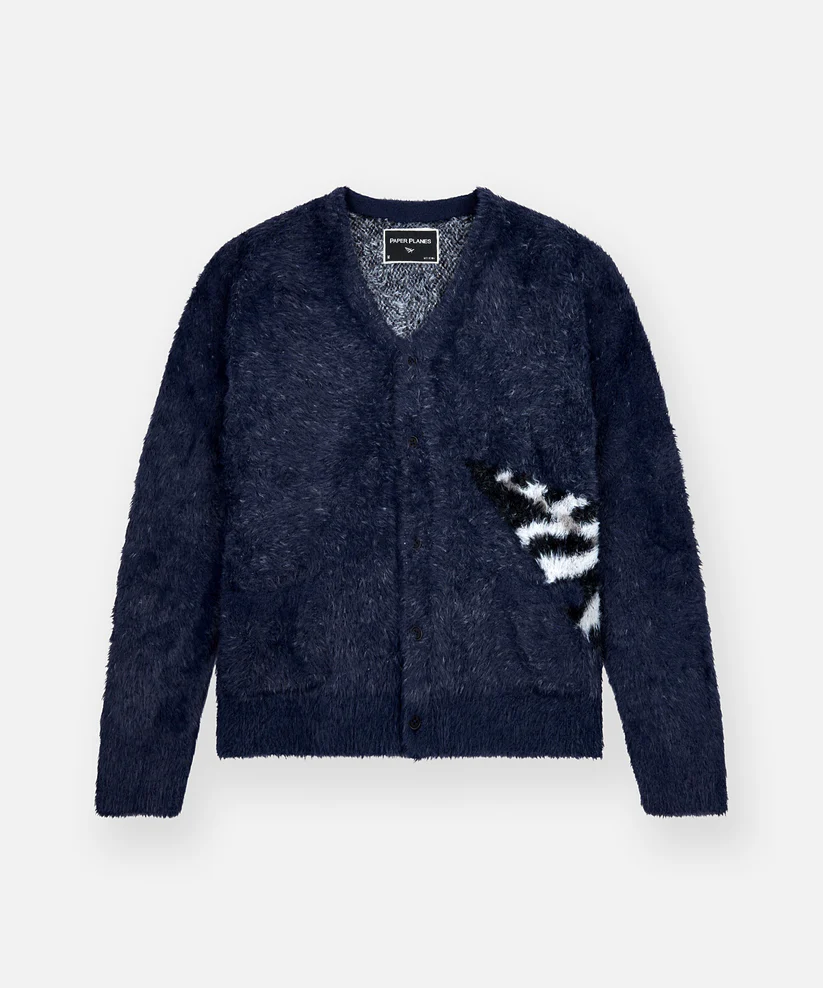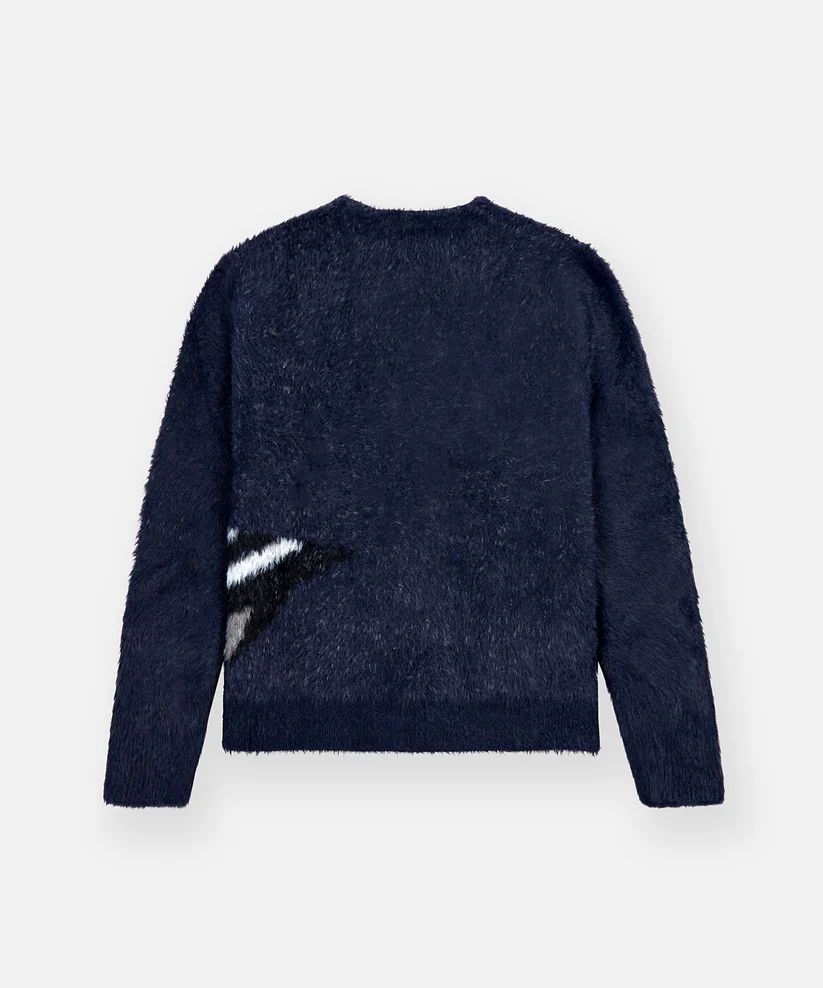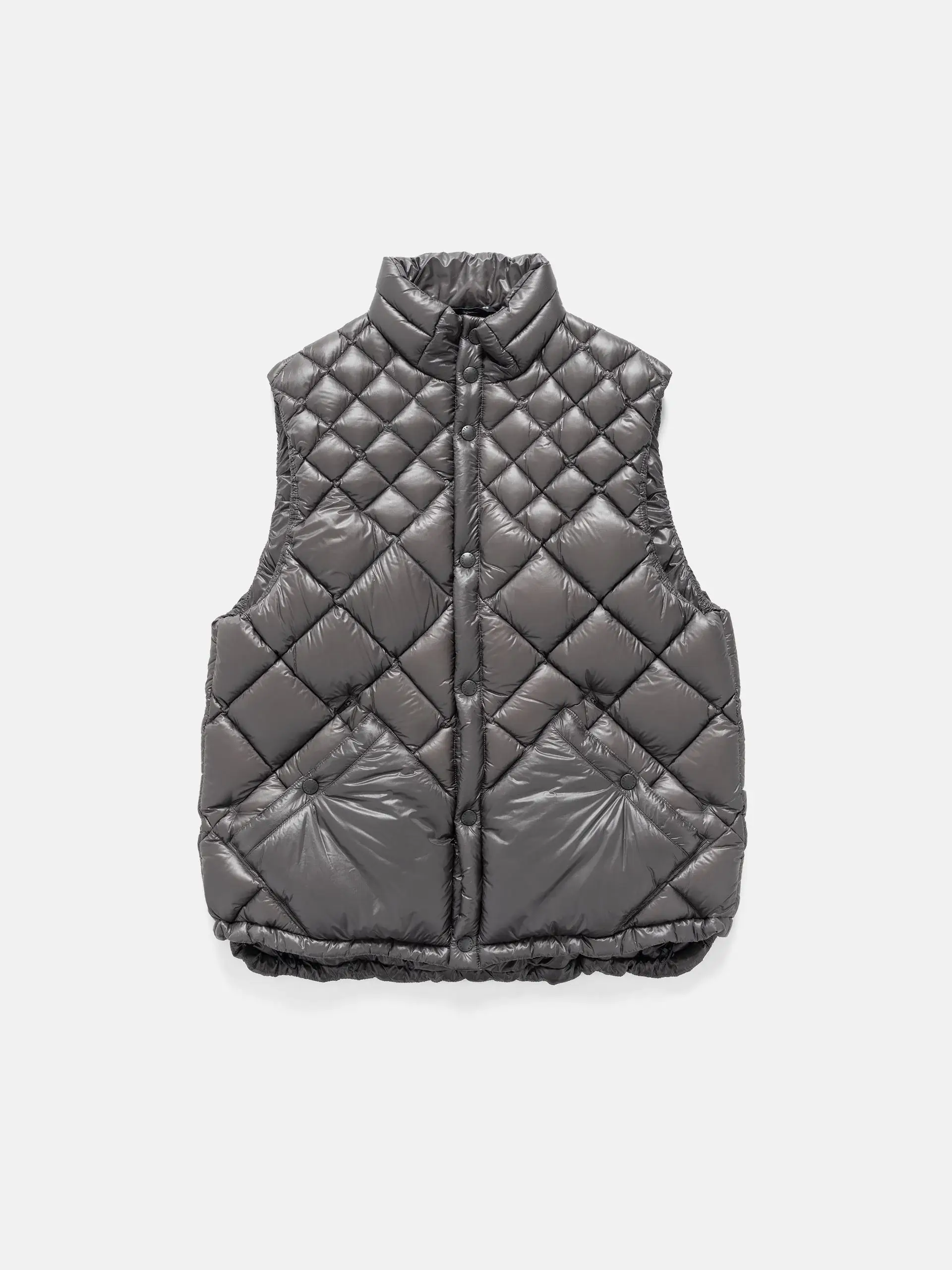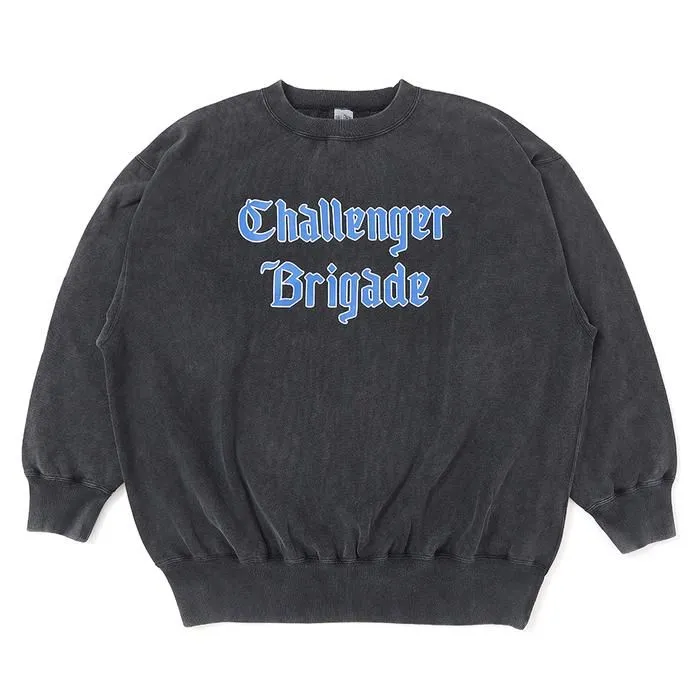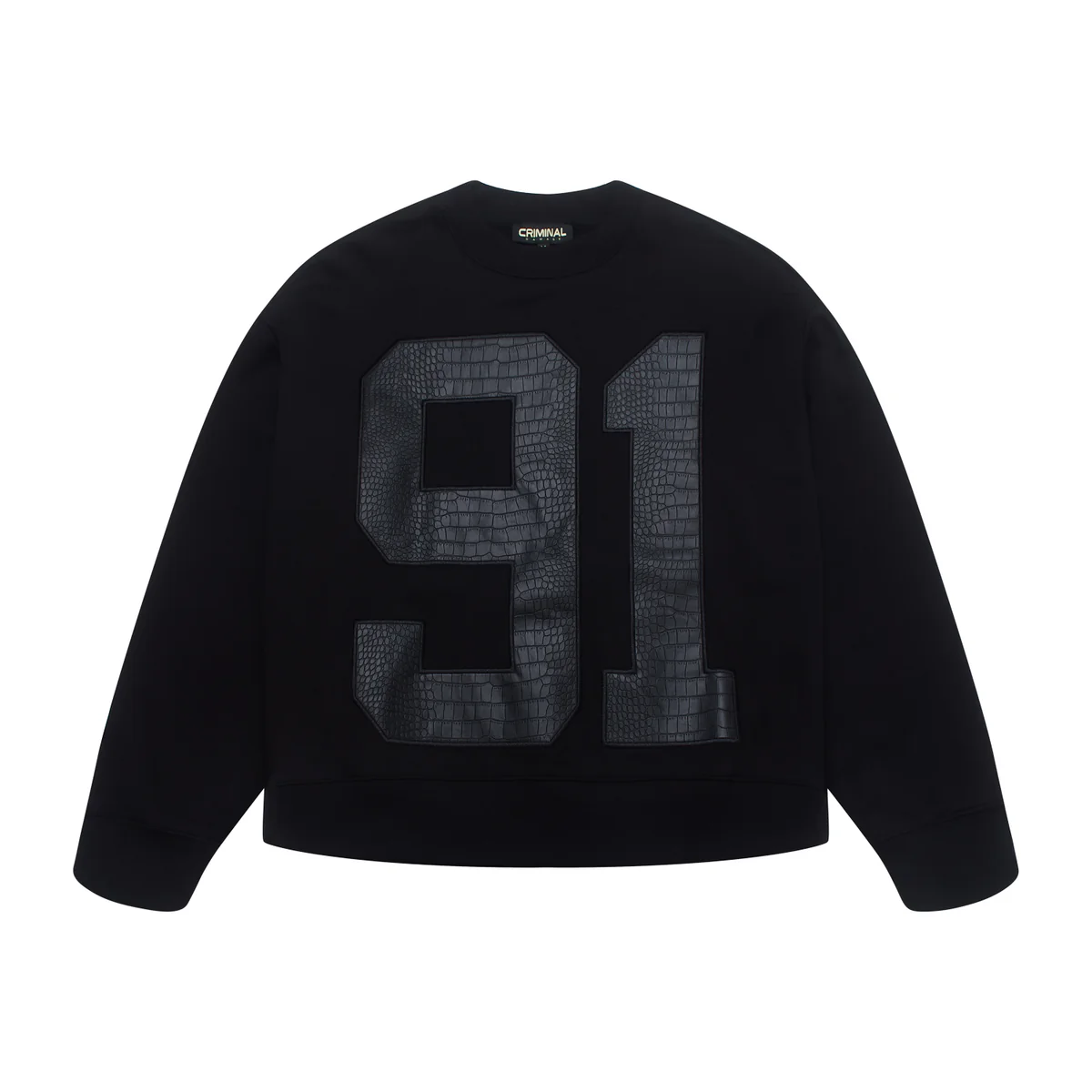The cardigan has always lived in a space between utility and statement. Long before it was reimagined in grunge scenes, haute ateliers, and contemporary streetwear rotations, the silhouette carried an association with gentility and leisure. Today, that perception has shifted. Brands like Paper Planes—co-founded by Emory Jones with the creative orbit of Roc Nation and Jay-Z—have brought a layered narrative to even the softest garments. The Paper Planes Fuzzy Cardigan is one of those pieces: a knit that looks simple at a glance but reveals its depth through texture, placement, and cultural grounding.
The Material Story: Why Fuzz Matters
Textiles tell stories. The fuzzy knit construction of this cardigan isn’t simply a matter of softness; it’s a gesture toward tactility in a world where digital culture increasingly dominates. The brushed yarn gives the garment a dimensional surface, catching light in a way that feels alive, never flat. Dark navy anchors the cardigan, offering restraint, while the textured fibers play against silhouette and form.
Unlike smooth jersey cotton or technical fleece, fuzzed knits embrace irregularity. That sense of movement works in tandem with the Paper Planes ethos of dreaming big while remaining grounded in reality. The fuzzy finish resists polish but never loses elegance, situating the cardigan within both streetwear and contemporary casual wardrobes.
Subtle Markings, Clear Identity
At first glance, the Paper Planes Fuzzy Cardigan is understated: a deep navy base, a button-front closure, and a relaxed, slightly boxy silhouette. But the point of tension—and the design’s true personality—emerges in the patterned panel on the wearer’s left side.
Here, the cardigan incorporates a jagged black-and-white graphic element, almost animalistic, almost abstract. It recalls both stripes and speed, like motion frozen mid-frame. Unlike loud all-over patterns, this asymmetric placement keeps the design grounded, while still giving the eye an arresting focal point. It’s an interruption, a visual riff, something that separates this cardigan from conventional knitwear.
The cardigan’s neckline is a low V, ideal for layering over T-shirts, henleys, or even fine gauge turtlenecks. Ribbing at the cuffs and hem ensures structure, preventing the cardigan from slouching into shapelessness despite the fluffy texture.
Paper Planes and the Art of Aspiration
To comprehend why a cardigan like this resonates, one must situate it within Paper Planes’ narrative. Since its inception, the label has emphasized symbols of dreaming and exploration. The paper plane motif, recurrent in much of the brand’s output, is a metaphor for ambition, imagination, and the courage to chart one’s own trajectory.
The Fuzzy Cardigan, while devoid of overt logo saturation, still embodies this vision. Its textured fuzz suggests both clouds and atmosphere, the liminal spaces through which planes travel. Its black-and-white slashing pattern interrupts predictability, echoing the idea of breaking through conventions.
Paper Planes has always straddled the line between streetwear and luxury, drawing as much from hip-hop heritage as from high-fashion sensibilities. This cardigan exemplifies that balance: approachable in comfort, yet refined in execution.
From Lounging to Layering
What makes this cardigan versatile is its adaptability. Styled simply, it can function as an elevated loungewear piece, worn over a plain tee with relaxed trousers. But it also holds its own in more intentional outfits. Pair it with tailored slacks and loafers, and the fuzzy cardigan becomes a subversive twist on smart casual. Worn with denim and sneakers, it slots neatly into modern streetwear.
The navy palette allows for experimentation with color pairings—olive, grey, and cream harmonize effortlessly—while the bold side pattern can be accentuated by echoing monochrome footwear or accessories. Because the design avoids logo-heavy branding, it integrates well into wardrobes spanning both minimalist and maximalist tastes.
Tactility in the Digital Age
Why does a fuzzy cardigan matter? In part, it’s because fashion is cyclical, and tactile knits are once again having a moment. From mohair cardigans worn by Kurt Cobain to recent fuzzy textures in Prada and Marni collections, these garments appeal to our desire for something that feels lived-in yet special.
In an age defined by screens and synthetic perfection, a fuzzy knit delivers warmth in both literal and metaphorical senses. The fibers invite touch; the garment feels human, imperfect, real. Paper Planes’ cardigan leverages that appeal while maintaining its cultural credibility, bridging comfort and identity.
Cardigans as Cultural Code
Once relegated to academics or grandparents, the cardigan has found new cultural weight. Tyler, the Creator’s Golf Wang reintroduced it with pastel energy. Japanese brands like Needles and Wacko Maria offered bolder mohair versions. High fashion labels used cardigans to subvert tailoring.
Paper Planes enters this dialogue with something distinct: a cardigan that doesn’t lean fully retro or ironic. Instead, it feels contemporary, aspirational, and urban. The brand has taken a garment historically defined by softness and imbued it with edge, layering narrative into a piece as casual as knitwear.
Impression
The cardigan’s fuzzy texture suggests mohair, though Paper Planes often utilizes blended yarns to achieve both durability and comfort. The knit density prevents excessive shedding, a practical consideration often overlooked in fuzzed pieces. The construction includes reinforcement at the button placket and ribbing, ensuring longevity and resisting sag with repeated wear.
Though not a tailored garment, attention to proportions matters here. The cardigan balances oversized ease with controlled length, allowing it to layer comfortably without overwhelming the frame.
Flow
The Paper Planes Fuzzy Cardigan proves that knitwear doesn’t have to be ordinary. Through texture, placement, and narrative, it embodies the brand’s ethos of imagination grounded in reality. It’s warm without being heavy, subtle without being boring, and culturally resonant without being overdetermined.
For those who see clothing not just as protection against the elements but as a code of self-expression, this cardigan is more than fabric—it’s a statement of dreaming with texture, of embracing imperfection, of layering comfort with culture.
No comments yet.

